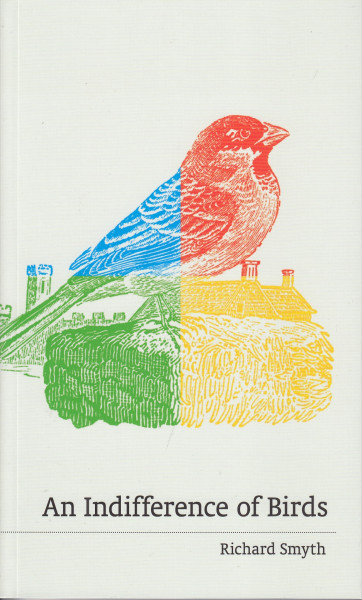
Mostly we think of birds in terms of how we see them, but this book turns the tables and imagines how birds see us. In only 100 pages, Richard Smyth takes us on a journey investigating how the human world affects birds.
Smyth looks at the ways in which we have changed things to favour some birds to the detriment of
others. He considers how we look to birds, how they may value the food waste we leave and the accidental rockfaces that we create in our cities. He suggests that these artificial environments are just environments to the birds, if they can use these as they would another natural environment, then they will use them.
He tries to look at howa bird might feel if it is caught to be then reintroduced somewhere else, does the bird in fact accept this just as though this is what happens to every bird at some point in its life? We can't ever know whether this is true, but it's certainly an interesting perspective.
Red kites are once again thriving above British cities but, as Smyth points out, these cities now are very different environments than they used to be and how does that impact on the species? Do red kites have any sort of folk memory of how the city was for previous generations?
One of the most sobering insights in the book is the gradual (and therefore easily overlooked) nature of most of the damage that we are doing to the world. Sudden extinctions are rare, but gradual loss is all too common. How do birds see the gradual loss of greenspace that is happening across the world, moment by moment and tightening the world for many species of birds. We don't notice the loss of one or two house sparrows in our local area, how do the sparrows themselves see it? Will we continue making the world a more hostile place for most species of birds or will we find a new way forward to accomodate birds in our world?
I love how this book turns things around, away from a human centric view of birds to a bird centric view of humans (though obviously, given this is written by a human, it is only a reimagining of a birdcentric view).
"Better, perhaps to embrace the birds' indifference. To try to see that 'ours' is also 'theirs'. To watch kestrels hunt in the cathedral cloister and think not how wonderfully they set off the architecture, but rather how wonderful it is that this thing we call 'architecture' has within it a whole other meaning, a whole alternative reality, a whole bunch of alternative realities: the kestrels' reality, the pigeons' or sparrows' or herring gulls' reality, realities of shelter, airflow, altitidue, prey, peace..."
An Indifference of Birds by Richard Smyth published by Uniform Books.
Very interesting. Not just in terms of how birds see us, but also how other animals see us. :-)
ReplyDeleteGreetings from London.